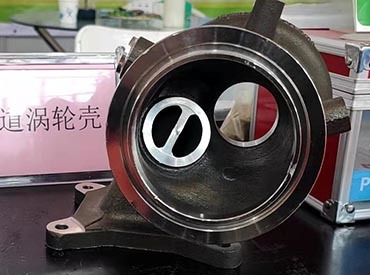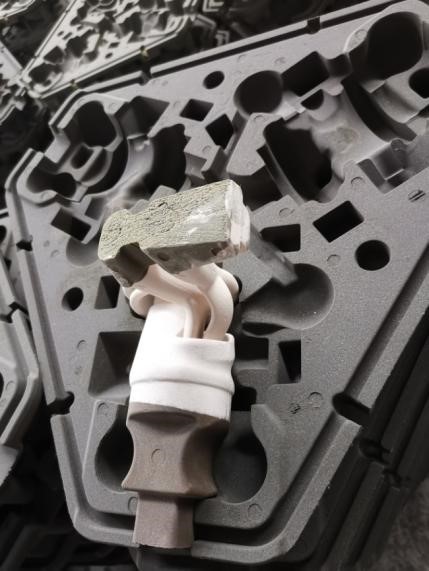Fused Ceramic Sand Applied on 2520 Turbine Housing
Release time:
2024-04-08
Source:
Fused Ceramic Sand Advantages
Fused ceramic sand is a new type of artificial foundry sand with Calcined Bauxite as raw material, which is melted in electric arc furnace, and then sprayed and screened until we got finished products. It has incomparable high-quality performance with silica sand. The main advantages are that the particle shape is spherical, the pH value is neutral, the refractoriness is high, and it is not broken during the use. With the deepening understanding of fused ceramic sand in the foundry industry, it has been widely used in the production of castings with different processes and materials.
Turbine Housing-Material introduction and casting performance requirements
1. Material introduction
2520 heat-resistant stainless steel (06cr25ni20) is austenitic chromium nickel stainless steel. Because of the high percentage of chromium and nickel, it has good oxidation resistance, corrosion resistance, acid and alkali resistance and high temperature resistance.
|
Chemial Composition |
Ni |
Cr |
Si |
Mn |
C |
S |
P |
|
19.00-22.00 |
24.00-26.00 |
≤1.50 |
≤2.00 |
≤0.08 |
≤0.030 |
≤0.035 |
2520 heat-resistant stainless steel is a matrix with a high proportion of Cr, Ni and austenite. Due to its poor fluidity, it is easy to produce defects such as pores, porosity, sand holes and cold shuts. The production of austenite dendrite will cause grain boundary segregation and linear arrangement of graphite, resulting in the decline of material properties.

2. Turbine Housing performance requirements
(1) Good high temperature oxidation resistance
Working at high temperature for a long time, the oxidation resistance of materials at high temperature directly affects the service life of superchargers. In order to improve the high-temperature oxidation resistance of materials, Ni, Cr, Mo and other alloy elements are generally added to the materials.
(2) Stable microstructure
In the range from room temperature to working temperature, the materials should not undergo phase transformation or be minimized as much as possible. Because the phase change will cause the change of turbine housing, produce internal stress and deformation, and seriously affect the service performance and life. Therefore, the matrix material is preferably a stable ferrite or austenite structure.
(3) High temperature strength
It must meet the necessary strength requirements for use at high temperatures.
(4) Low coefficient of thermal expansion
It is beneficial to reduce the thermal stress and thermal deformation of the supercharger, and improve the service performance and service life of the flattening.
(5) Good process performance
In order to reduce the excessive energy loss in the process of gas flow in the channel, the size accuracy demand of which is very high, and the surface roughness is required to be Ra12.5.
3. Main indexes of castings
Casting weight 3.2kg, outline dimension 200×160×150mm, the minimum wall thickness is 4mm, and the size of channel pipe fittings is compared by rubbing.

Properties and production process of resin coated ceramic sand
|
Inspection items |
Tensile strength ( room temperature) |
Bending strength ( room temperature) |
Hot bending strength |
L.O.I |
Melting point |
Gas evolution |
|
technical standard |
≥4.2MPa |
≥8.5MPa |
≥3.5MPa |
≤3.5% |
90~110℃ |
≤17ml/g |
|
Measured value |
5.286 |
10.17 |
3.867 |
1.596 |
110 |
10.6 |
Popular Tags







